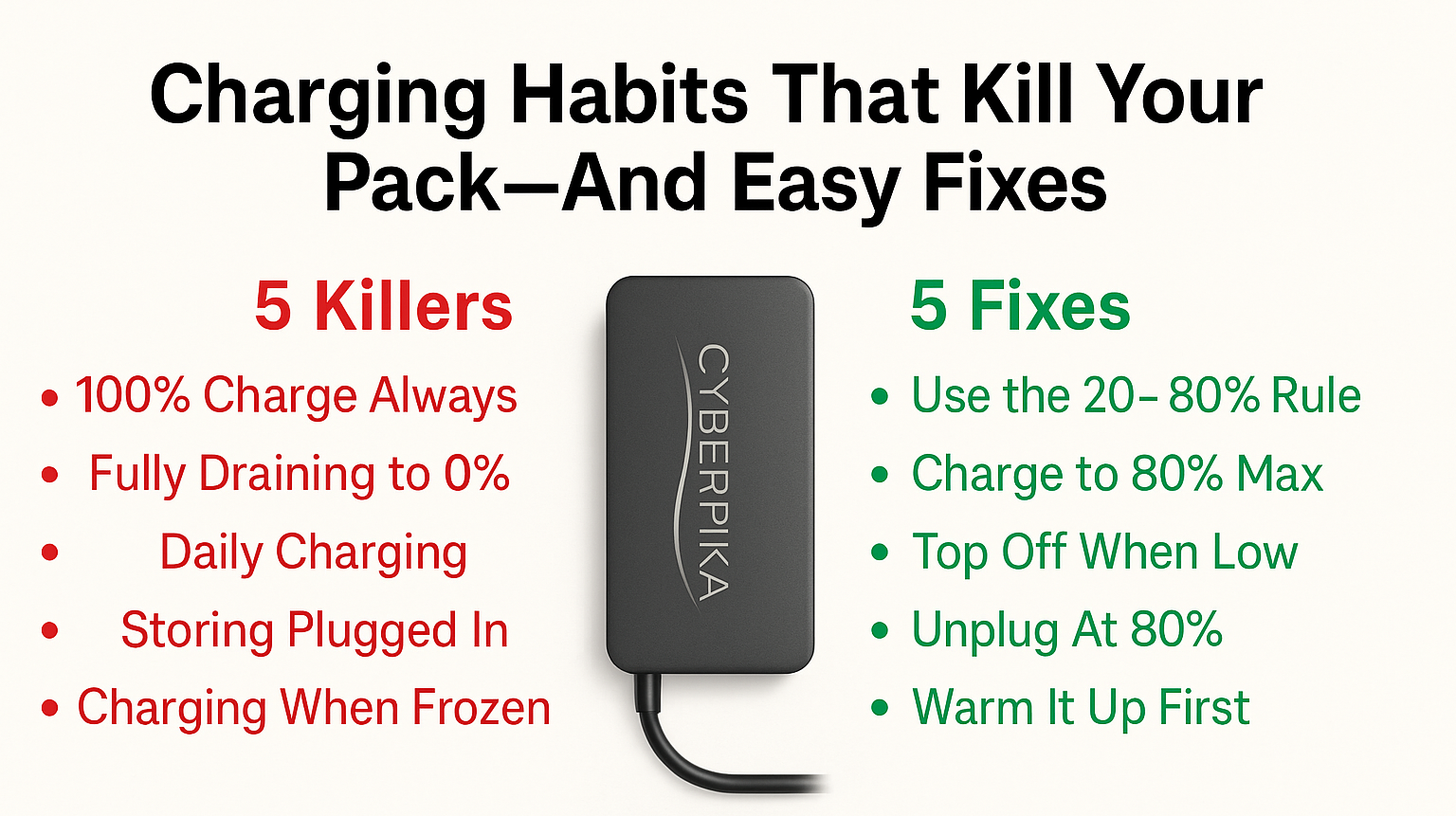Your e-bike battery is a high-tech marvel, but it has enemies. The fastest way to reduce its capacity and shorten its overall life is through poor charging habits. The good news is that these mistakes are easily avoidable.
By recognizing the actions that stress your battery’s lithium-ion cells, you can swap them out for easy, mindful routines that will add years to your pack’s usable life. Here are the top five charging habits that kill your e-bike battery and the simple fixes to keep your pack healthy.
1. The Killer: Always Charging to
The Problem: Lithium-ion cells are under the highest internal stress when fully charged. Continually topping up your battery to forces the cells into this strenuous, high-voltage state, which accelerates cell degradation and permanently reduces the battery's capacity over time.
The Fix: Adopt the Rule. For most daily rides and commutes, aim to charge your battery only to or . This allows the battery to operate in its happiest, least-stressed state. Only charge to when you know you need the maximum range for a long trip.
2. The Killer: Charging When Frozen
The Problem: Attempting to charge a lithium-ion battery when its temperature is below freezing ( or ) causes a process called lithium plating. This is where metallic lithium builds up on the anode, which irreversibly damages the cell, permanently reduces capacity, and increases the risk of fire.
The Fix: Bring it Inside to Warm Up. If you rode or stored your bike in the cold, always bring the battery indoors and allow it to warm up to a comfortable room temperature (ideally to or to ) for at least an hour before plugging it in.
3. The Killer: Charging Right After a Hard Ride
The Problem: A long, hard ride pushes your battery and motor, generating heat. Adding an electrical current immediately after a ride generates even more heat. Heat is the single biggest factor in lithium-ion cell degradation, so charging a hot battery is compounding the stress.
The Fix: Give it a Cool-Down Period. After a long or strenuous ride, let your battery rest for to allow its temperature to drop back to normal. Once it’s cool to the touch, it is safe to charge.
4. The Killer: Using a Generic or Damaged Charger
The Problem: Your e-bike charger is specifically designed to manage the delicate voltage and current of your battery pack. A generic, uncertified, or faulty charger (especially one with frayed or taped-up cables) can deliver an unstable current, overcharge the cells, or generate excessive heat. This is a primary cause of battery damage and fire.
The Fix: Use the Manufacturer’s Charger, Always. Only use the charger that came with your e-bike or one directly purchased from the bike manufacturer. If your charger is damaged, replace it immediately with a certified product.
5. The Killer: Storing it Fully Charged or Fully Drained
The Problem: Storing your battery for an extended period (more than a week) at either charge (high stress) or charge (risk of "deep discharge") accelerates internal degradation and can permanently "kill" the battery, respectively.
The Fix: Adopt the Storage Rule. If you know you won't be riding your e-bike for a week or more, ride or charge the battery until its gauge reads between . This is the chemical sweet spot where the cells are under the least amount of internal stress. Store it at this level in a cool, dry place.


Share:
How Depth of Discharge Impacts Lifespan (Keep 20–80%)
Cold vs. Heat: Temperature Rules for Safer Charging